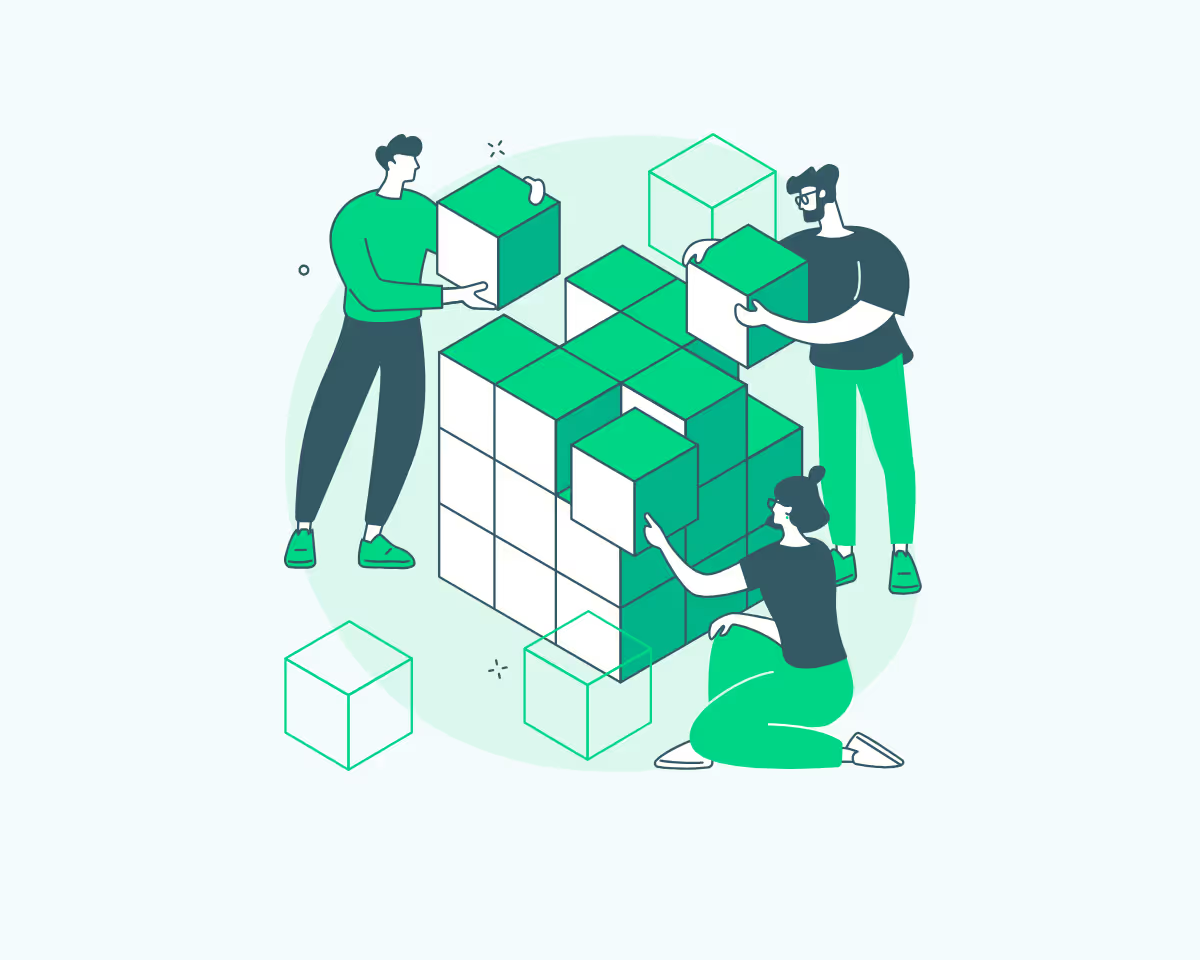Ready to create more pipeline?
Get a demo and discover why thousands of SDR and Sales teams trust LeadIQ to help them build pipeline confidently.



Sales and marketing teams need up-to-date, actionable data to reach their full potential — and B2B data enrichment can help.

Unfortunately, data integrity issues impact organizations of all sizes; with industries rapidly changing and more and more workers leaving jobs, it can be difficult to ensure B2B contact data stays current.

By investing in B2B data enrichment, teams can leverage data across their new and existing contacts that is continuously updated and verified to supercharge prospecting efforts and win more business.
Get a demo and discover why thousands of SDR and Sales teams trust LeadIQ to help them build pipeline confidently.
B2B data enrichment is the process of enhancing existing business data by adding detailed information to give it more depth and context. It goes beyond having a list of phone numbers and emails in your contact database. B2B data enrichment can include:
Why does this matter? Because enriched data gives your marketing and sales teams a clearer picture of potential customers, which helps them create more personalized messages and make smarter, data-driven decisions.
With enriched data, reps aren’t just reaching out to some faceless contact with no context. Instead, you’re understanding their needs, timing, and preferences — which can lead to higher engagements, better lead quality, and ultimately more sales.
In general, we would say yes, your teams likely need B2B data enrichment services.
Whether you’re a small startup or an enterprise business with many channels and reps, enhanced data enrichment can have major impacts to helping you know more about prospects and target your efforts more effectively.
However, if you haven’t got the foundation set up yet with general B2B contact data — going straight to enriched data may overwhelm your team. You still need the basics like phone and email, and ensuring you have a high quality provider on that data is a top priority. From there, just like landing and expanding in sales, you can expand the types of data you’re mining for insights as you prospect.
With more details at their disposal, teams can not only qualify leads more effectively but they can also increase engagement and accelerate the sales cycle, which translates into more conversions.
While data enrichment can help sales and marketing teams cover more ground, there are some pitfalls to watch out for.
B2B data enrichment works by taking your existing data — think basic contact details and company information — and enhancing it with additional insights from various data sources. It can also update that traditional contact data to ensure it is accurate and actionable.
This process uses algorithms and databases to fill in gaps, adding things like job titles, industry details, company size, buying signals, job tracking, and even social profiles to existing records.
To give you a better idea of how the process plays out, let’s turn our attention to the specific steps you’ll take as you begin embarking on B2B data enrichment initiatives.
Your journey to optimized contact data starts with identifying the data elements that need to be enriched. As you begin, look at your existing records to see what information is missing or outdated — like job titles, company details, job tracking, and industry-specific data. Prioritize these gaps based on what’s most valuable to your sales and marketing teams to ensure you’re focusing on the data that will drive better targeting and engagement.
For example, a rep targeting healthcare organizations might use industry-specific data — like the need to maintain increased regulatory compliance requirements — to inform cold email outreach. But, if you have a broader SaaS tool that any type of marketing team can use, you may find having company data about size or revenue to be more relevant.
Getting the biggest return from your B2B data enrichment investments is only possible when you use the best tools — which is why identifying ideal solutions is an important piece of the puzzle. While it’s possible to piece together information from various data sources, the approach is time-consuming and inefficient.
In 2025, the best and easiest way to enrich your B2B contact data is by partnering with a provider that offers a wide range of reliable data solutions, ensuring you have accurate, up-to-date data that’s actionable at your fingertips — always. In an age where people are changing jobs with more frequency, it’s important to choose a solution that stays current. We have a list of the best data enrichment tools & solutions available.
After you’ve identified a few finalists, it’s time to assess the quality, accuracy, and reliability of each vendor’s data. Look for providers that offer transparency about their data sources and methodologies, since this can give you confidence in the information you receive.
While you're at it, consider checking customer reviews on sites like G2 and TrustRadius and read case studies to see how other businesses have benefited from their services in the real world.
Need help evaluating data enrichment tools? Check this out.
Once you’ve zeroed in on a potential provider, make sure the solution is feature-rich and integrates with the other tools your sales and marketing teams use every day.
For example, LeadIQ integrates a host of tools, including Salesforce, Gong Engage, Salesloft, and Groove. At the same time, our Chrome extension mirrors your LinkedIn Sales Navigator and enables you to unlock valuable prospect insights and take your next prospecting step without leaving your browser. On top of this, we also offer Scribe, which enables your teams to rapidly write personalized emails and messages in just a few clicks.
In addition to features, you’ll all need to get price quotes from the providers on your short list. Some vendors are significantly more expensive than others even when the data and features are the same.
Once the paperwork is signed, you should have a team with folks from both companies to help integrate the tool and ensure a successful implementation. Your side seems someone who is a CRM wizard while the provider should offer an integration specialist or data engineer to assist in the deployment.
By partnering with a vendor committed to ensuring you have a successful rollout, you can increase the chances you get rapid ROI from your data enrichment investments and can put the higher-quality data to use in short order.
After all of your existing data is enriched, ensure that any new leads captured through the website, webinars, ads, and your sales team are being enriched across every platform. For example, if you’re using Salesforce for sales and HubSpot for marketing, you need to make sure data is feeding into both places.
As we mentioned earlier, if your team doesn’t have a plan on how to use the new data, even the best B2B data enrichment tool isn’t going to help. To make sure you generate a return on your investment, you need to have a plan.
For the best results, start with one use case, like segmentation. Once you’ve done that successfully, move onto another use case, like personalization or upselling to existing customers by reaching out to other teams within the organization.
By now, you understand why B2B data enrichment is important and how to get a data enrichment initiative started at your organization. In this section, we cover some common questions organizations ask as they consider whether now’s the right time to invest in data enrichment.
B2B data enrichment can be useful for any size team at any stage — whether it’s a startup with a solo sales rep or an enterprise with a built-out multi-product sales team. However, what type of data you’re looking for and the features you need in a solution may different depending on your business goals and the tools in your tech stack.
Here at LeadIQ, we understand how hard it is to pick any type of software for your business. To help you make the best choice, we offer free consultations and in-depth data tests to help us understand your needs and offer recommendations on services that might be most beneficial. Whether you end up going with LeadIQ or not is fine by us.
Schedule your free consultation today.
B2B data enrichment provides valuable insights for several teams across an organization:
We’re also seeing recruiting teams increasingly utilize B2B data enrichment to identify potential candidates and assess their fit for open positions by accessing data about their skills, experience, and professional networks. This growing trend highlights the versatility of data enrichment across multiple business functions.
While B2B data cleansing and data enrichment are both essential processes that enhance the quality and reliability of business data, they serve different purposes.
Data cleansing involves identifying and correcting inaccuracies, duplicates, and inconsistencies within a database to ensure that the information is accurate and reliable. This process helps maintain data integrity, making B2B data more trustworthy for decision-making.
Data enrichment, on the other hand, adds value by supplementing existing data with additional information — like demographics, firmographics, technographics, and contact details — to enhance the depth and breadth of data. This, in turn, allows businesses to gain better insights into prospects and improve the targeting of their sales and marketing efforts.
When used together, data cleansing and data enrichment help organizations leverage their data more effectively for growth and customer engagement.
While you can search “best B2B data enrichment tools” on Google and get tons of different answers — most of them sponsored advertisements or posts featuring companies that paid to be included — the only way to really know which B2B data enrichment tool is best is by testing the data.
To learn more about what the best B2B data enrichment tools on the market are and how to figure out which options are best for your organization, here are some resources to check out: